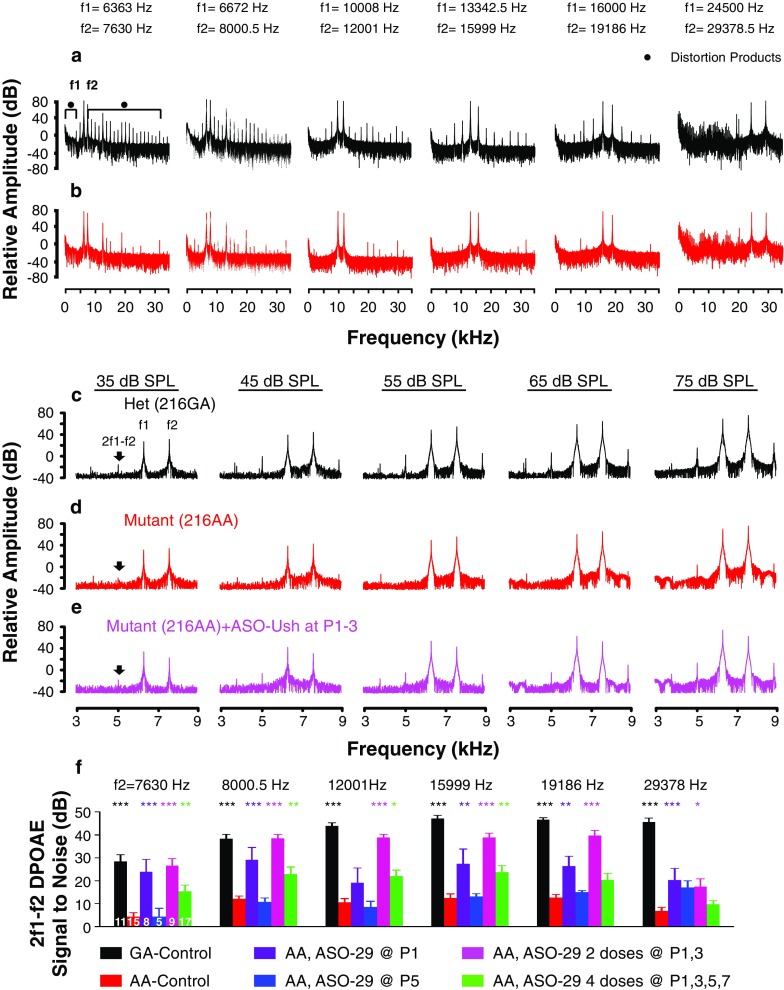Fig. 1.
Distortion product optoacoustic emission analysis in ASO-treated Ush1c mice. Representative power spectra for all tone pairs at the highest stimulus intensity of 75 dB SPL from a a 216GA control littermate (black) and b Ush1c 216AA mouse (red). Power spectrum of the tone pairs at primary frequency tones of 6363 and 7630 Hz for Ush1c 216AA mice treated with 300 mg/kg of ASO-29 at P1–3 (e, pink line) and untreated 216AA (d, red line) and 216GA control (c, black line) mice at 1 month of age. The primary tones f1 and f2 and 2f1-f2 distortion product (black arrow) peaks are indicated. Response at 2f1-f2 increases with stimulus intensity for 216GA mice and 216AA mice treated with ASOs at P1–3 but not for untreated 216AA mice. f Average 2f1-f2 distortion product at 75 dB SPL for the tone pairs in 216AA mice treated with 300 mg/kg of ASO-29 with one dose at P1 (purple) or P5 (blue), two doses at P1 and 3 (P1, 3; pink), or four doses at P1, 3, 5, and 7 (P1, 3, 5, 7; green); 216AA untreated (red) and control littermates (black). The number of mice assayed is indicated in bars. Error bars represent SEM. For each frequency, asterisks indicate significant difference (*P ≤ 0.05, **P ≤ 0.01, ***P ≤ 0.001, ANOVA with Tukey-Kramer post-test) from control mutant thresholds (red). P values, specific test, test value, and degrees of freedom for all comparisons in this dataset are shown in Supplemental Table Comparison 1. dB, decibel; SPL, sound pressure level, kHz, kilohertz; Het, heterozygote; f, frequency

